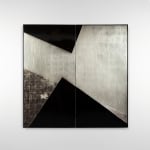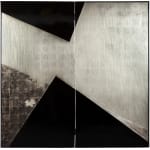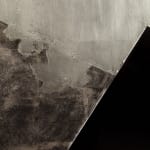



Katsu Hamanaka Japanese-French , 1895-1982
Composition, 1930
Exceptional Douglas fir wood two-fold screen, with natural black lacquer and white gold leaf
Height: 63 in.
Length of each panel: 31.5 in.
Total Length: 63 in.
Length of each panel: 31.5 in.
Total Length: 63 in.
One-of-a-kind
Signed on the lower left "Hamanaka" and in Japanese
Further images
Decisively modern, Katsu Hamanaka's lacquer work is integral to his notoriety. Inspired by the great master Seizo Sugawara (who also worked with Eileen Gray and Jean Dunand), Hamanaka distinguished himself...
Decisively modern, Katsu Hamanaka's lacquer work is integral to his notoriety.
Inspired by the great master Seizo Sugawara (who also worked with Eileen Gray and Jean Dunand), Hamanaka distinguished himself by implementing the ancestral art of Japanese lacquer in his striking abstract compositions. Overall, Hamanaka's work is exceptionally rare, as many of his pieces were lost or destroyed in the 1930's.
We would like to thank Mr. Miçao Hamanaka, artist's son for authenticating this work.
Provenance
The artist's personal collection, thence by descent
Exhibitions
A version of this screen with three folds was exhibited at "Salon d’Automne" in 1930, Paris
Literature
L’Art Vivant, December 1st, 1930 p.18



